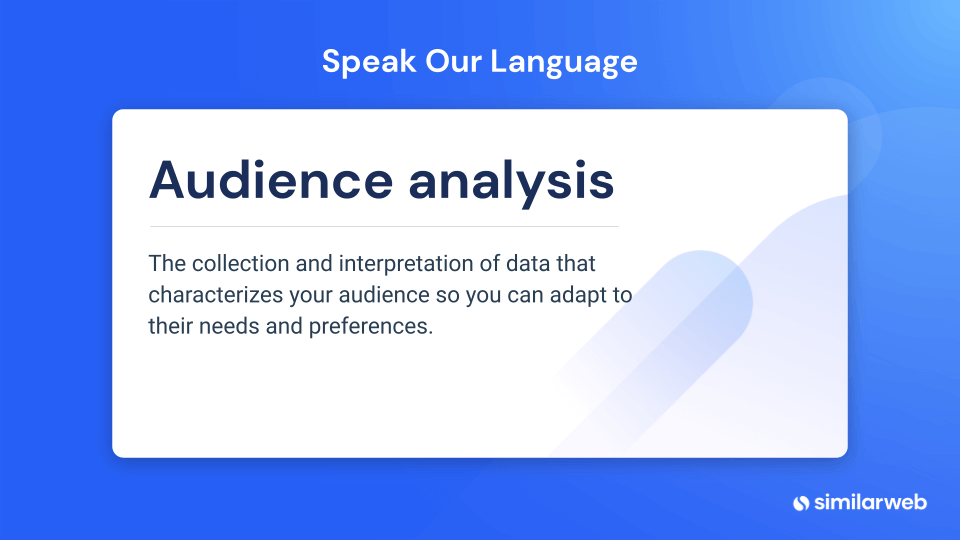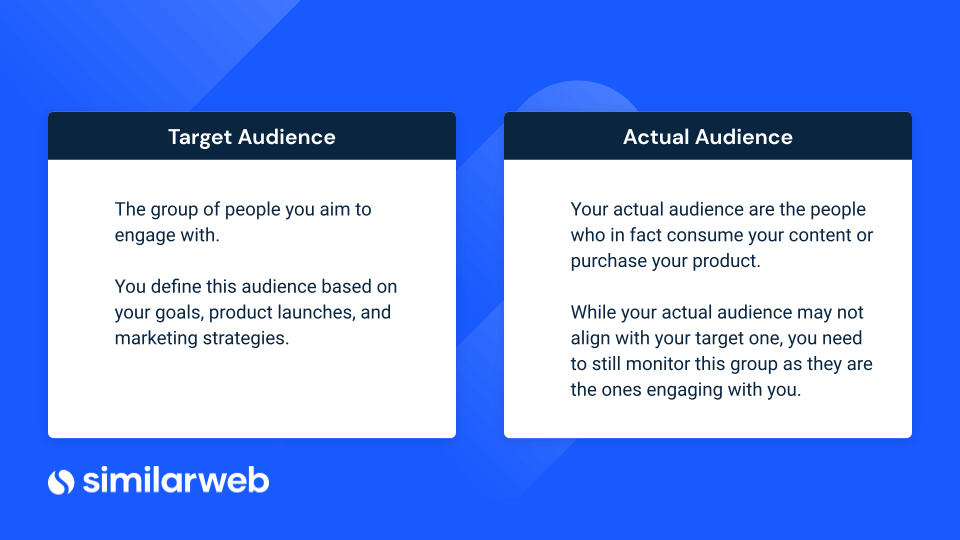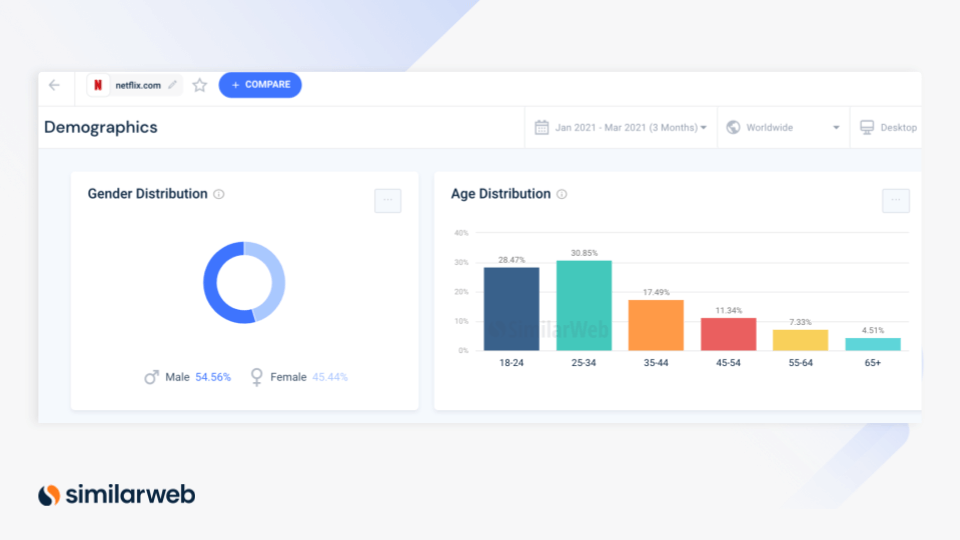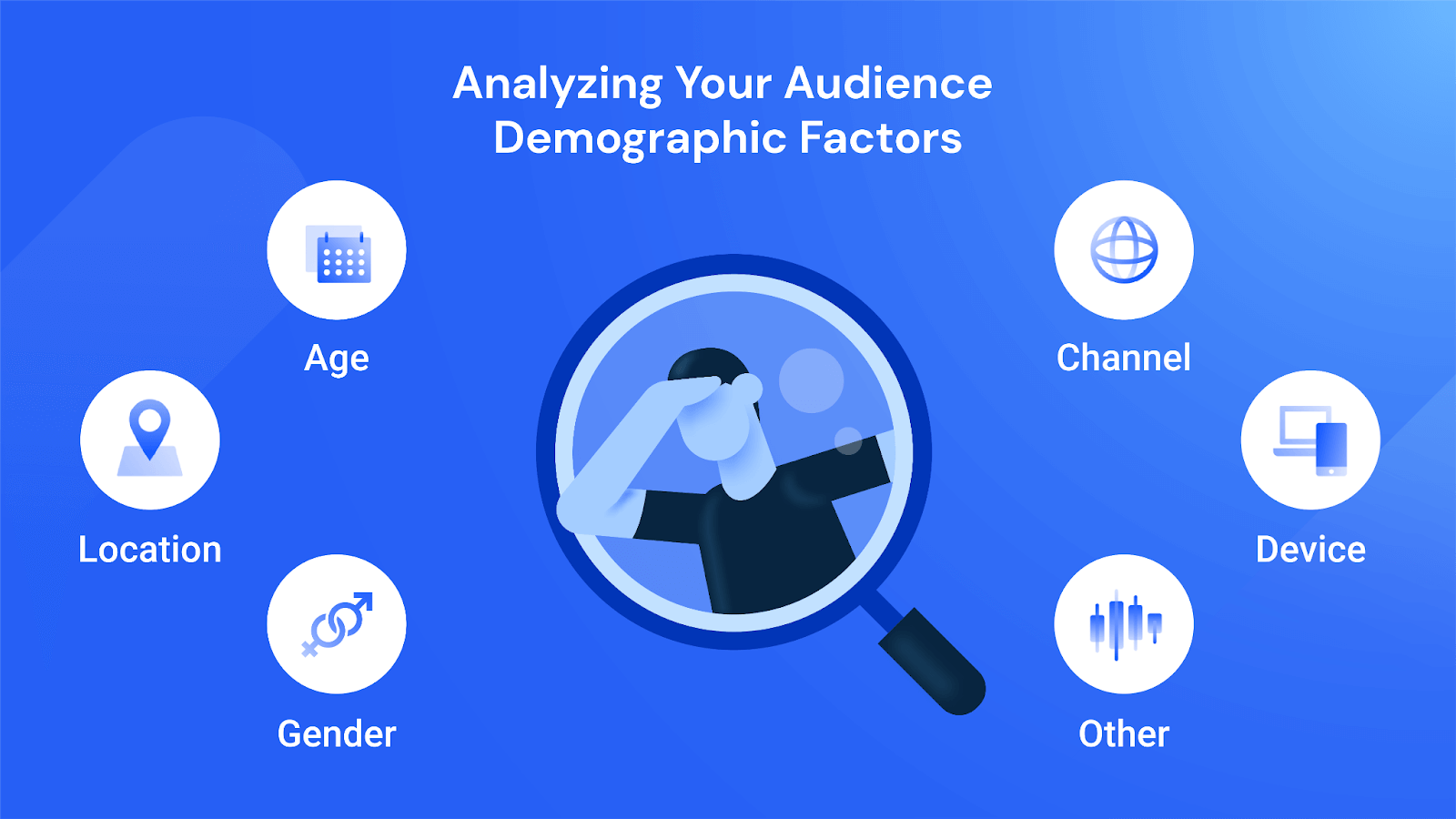4 Audience Analysis Examples for a More Targeted Strategy

Today, we’re looking at audience analysis examples; something that any business leader, marketer, or product team should care deeply about.
The way you talk, your tone of voice, and even your body language can change drastically depending on the context and who you’re talking to – your audience. You naturally adapt to connect with the person you are trying to reach.
Think about it: when you catch up with your friends, is it the same way you talk with your manager? Of course not.
In market research, it’s important to sharpen your audience analysis skills to reach your full potential. In this article, you’ll learn to differentiate between the main types by analyzing real-world audience analysis examples.
First, let’s get into the basics.

What is an audience analysis?
Audience analysis is the collection and interpretation of data that characterizes your buyer personas so you can adapt your marketing efforts to what they need and what they prefer.
And what exactly does ‘audience’ mean in this context? Your audience is the group of people who read your content. These are the people that your products or services will help. This could be anyone that shows interest, support, or enthusiasm for your company or product.
Following an audience-centered approach drives more impact from your branding and marketing strategies.
But before we dive into what audience analysis is and show different audience analysis examples; I want to make one critical distinction.

You need to consider two target markets: your target audience and your actual audience. The target audience is the group of people you aim to engage. This specific audience is defined by you. Your actual audience is the people who in fact consume your content. This is the audience you need to monitor.
Ideally, you want them to be the same.
Audience analysis examples and types
1. Demographic analysis
Most marketers tend to include audience demographics in their target audience analysis in some way. It’s one of the easiest ways to get a general understanding of your audience.
On a very basic level, you want to identify key demographic information such as the age group, gender, and location of your target audience. Other factors include education, socio-economic level, profession, marital status, and the list goes on. Which demographics are essential for you to measure, depends on your industry and what you offer.
Whatever the scenario, demographic audience analysis forms the basis for defining your target audience.

Let’s see how that works in a real-life example:
Take a platform that offers subscriptions to digital magazines such as zinio.com or magzter.com. Naturally, you offer a variety of content that targets a specific age group or gender. But to promote your service, you would want to know if there are certain populations that are more likely to purchase subscriptions through your site than others.
To add new magazines and grow your market share, you would collect and correlate demographic data and determine the audience with the highest potential.

2. Behavioral analysis
In a digital setting, behavioral analysis refers to how people act and react when they browse or communicate.
You want to track the customer experience, determine how your audience reaches your site, and which channels bring the most website traffic. Through engagement metrics, you learn what’s most popular with your audience. For example, maybe most of your customers reach your website through social media and or paid marketing campaigns. You can make sure to optimize these channels for success.
By correlating behavioral and demographic data, you can learn more about your target audience’s content preferences and conduct a competitive analysis to see where you can improve.

You can see the many different ways in which audience insights can be useful. Here’s an example that showcases the value:
Let’s say your company offers a social listening tool such as Brandwatch or Sprout Social. In addition to the paid version, you also offer a free “lite” one. It’s critical to identify which users are more likely to purchase a premium account, especially because the landscape is highly competitive. You need to analyze which channels generate the most valuable traffic and which steps clients take before converting.
Analyzing behavior that indicates a higher conversion potential lets you build an effective lead-nurturing strategy.
3. Psychographic analysis
Here’s where things get a little more complicated.
Psychographic analysis looks at the shared values, beliefs, opinions, and attitudes of your audience. These are a lot harder to identify than demographics and tougher to measure than behavior. Psychographic analysis also means investigating your brand awareness, including what your audience already knows about you and your products. The way your audience perceives your brand relative to others in the industry impacts their decision.
Sometimes a person’s viewpoint can even be a prerequisite for being part of your audience.
Let’s take an NGO supporting environmental sustainability issues as an example.
The main objective of your website is to raise donations. You need to reach individuals, companies, and organizations that have environmental consciousness printed on their flags. You could analyze what else your donors have in common, which organizations they are affiliated with, and which content they consume.
If you discover, for example, that the majority also supports LGBT rights, you can add this to your target audience description.
4. Situational analysis
This is more relevant for live audiences, but we’ll demonstrate some cases where it’s helpful for your digital strategy as well.
The situational analysis includes investigating the size of your overall audience and its segments of it. You can divide it according to medium or channels, demographic factors, or stages of the funnel. It also investigates seasonal factors that could affect audience behavior and decision-making, such as public holidays or times of the year.
You basically want to understand how specific situations or circumstances impact your audience.
What are some use cases for this type of analysis?
For example, it might be useful to determine if the people reading your blog are in the beginning phase of the buyer journey and become webinar participants further down the road. A global retailer would want to verify the impact of different holidays. How much do sales increase over Christmas, and do sales during Ramadan go up or down? A wellness-related app becomes significantly more relevant after someone experiences a health issue.
When you consider these factors, you can make them work in your favor.
Download your FREE guide
Audience analysis example deep dive with surprising results
Similarweb’s analytics platform lets you analyze not only your own audience but also that of your entire industry and competitors.
You can monitor and compare their audience demographics to your own. Analyze if and how they differ and what that means for your business. Similarweb also provides a wide range of engagement metrics that you can filter and view from different angles. Understand audience behavior and how to convert them.
You may find unexpected information that helps you in ways you didn’t even think about.
Just take this example of how a skin-care company analyzed audience behavior and ended up improving product innovation.

A cosmetics company wanted to know which beauty brands and products were on an upward trend with their audience. They first identified the key players in the beauty industry that receive the most traffic, then filtered only transactional sites to see who gets the most business.
Next, they filtered by the change to see which companies experienced the most substantial growth. They then looked at the trending keywords that brought traffic to these companies to get more actionable insights.
Here they discovered that their target customer’ searches were highly ingredient-focused. Meaning, their audience is likely more concerned with skin health than beauty and wants to ensure they are not using harmful chemicals or ingredients. This discovery was useful not only for their messaging and marketing efforts but also for new product development.
FAQ
What is an example of audience analysis?
A clothing company might think the world is its target audience, but it could develop several specific audiences, such as skaters and hikers. The process of identifying the characteristics of these target audiences is audience analysis.
What are the 3 types of audience analysis?
Audience analysis is categorized into three types: demographic, psychographic, and situational analysis.
How can audience analysis help with marketing?
Audience analysis is an important element of any marketing plan. It helps marketers identify the most effective ways to reach their target audience and what types of messaging, products, services, and even pricing will be most effective. It can also help marketers create content that resonates with their target audience and better track the success of their marketing efforts
What are the key elements of audience analysis?
The key elements of audience analysis include researching demographic information, understanding buying habits, lifestyle, values, and attitudes, and creating content that resonates with the target audience.
How do you conduct audience analysis?
Audience analysis can be conducted through various methods, including surveys, focus groups, interviews, and market research. Additionally, online platforms and tools can provide valuable insights into an audience’s demographics, buying habits, lifestyle, values, and attitudes.
What is the benefit of conducting audience analysis?
The benefit of conducting audience analysis is that it can help marketers create more effective marketing plans and campaigns that are tailored to their target audience. It can also help marketers understand their target audience’s needs and interests in order to create content that resonates with them
Get to know your audience on a deeper level
Contact us to set up a call with a market research specialist








